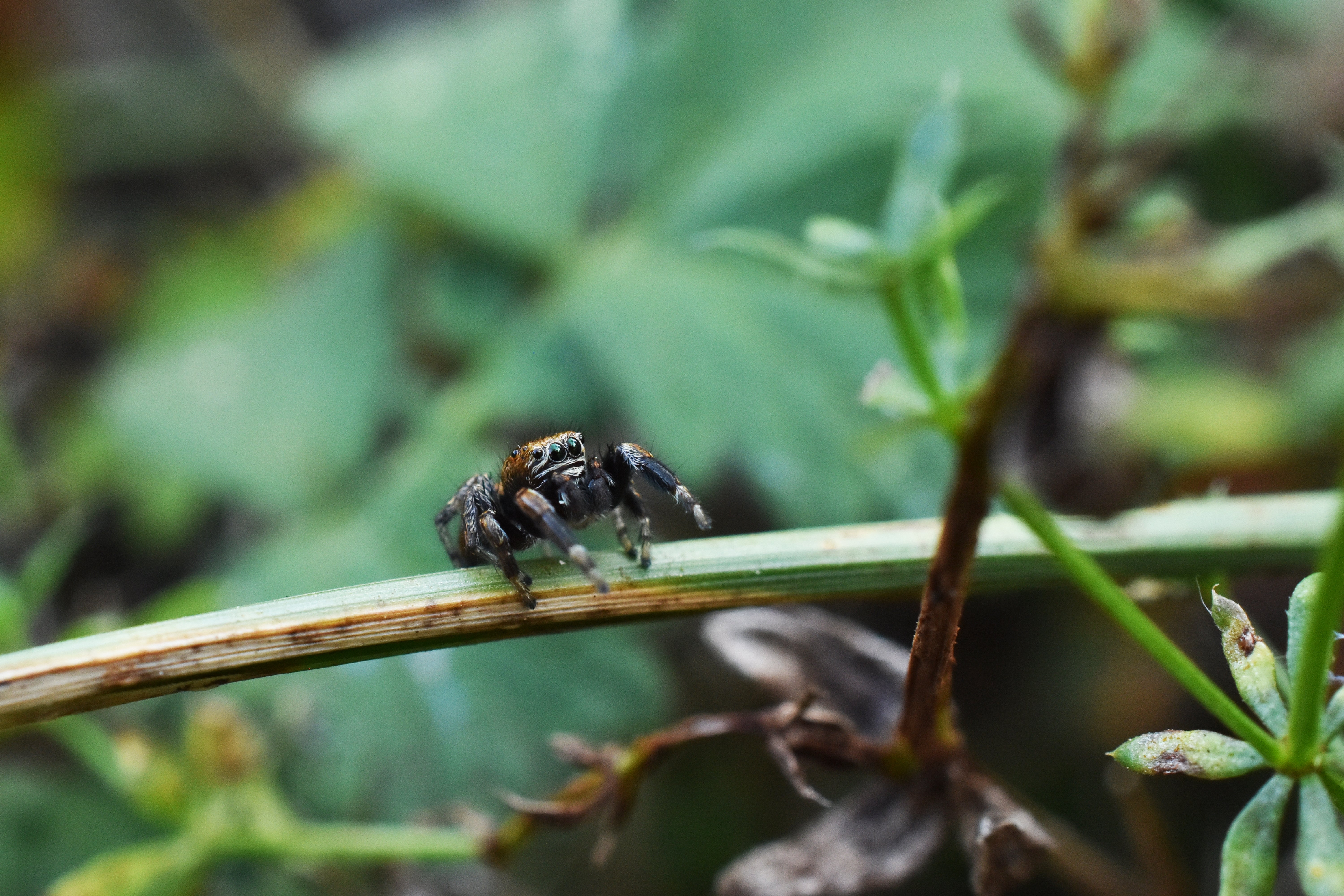Barred from her lab by pandemic restrictions, behavioral ecologist Daniela Rößler caught local jumping spiders and kept them in clear plastic boxes on her windowsill, planning to test their reactions to 3-D-printed models of predatory spiders. When she came home from dinner one night, though, she noticed something strange. “They were all hanging from the lids of their boxes,” says Rößler, a postdoctoral researcher at the University of Konstanz in Germany. She had never seen jumping spiders suspended motionless on silk lines like this before. “I had no idea what happened,” Rößler says. “I thought they were dead.”
It turns out the jumping spiders were simply asleep—and that Rößler had discovered an alternate sleeping habit of the species Evarcha arcuata, which had been known to build silk sleeping dens in curled-up dead leaves. But the real surprise came when she decided to spy on them all night. She bought a cheap night-vision camera, duct-taped some magnifying lenses to it (E. arcuata is typically around six millimeters long) and aimed it at a sleeping female spider. What Rößler saw on the recording astonished her.

Mostly the spider just hung there. But then her legs started to twitch, and her abdomen and even her silk-producing spinnerets did so as well. Sometimes her legs curled in toward her sternum. With every spider Rößler recorded, these odd movements only appeared during distinct bouts that lasted a little more than a minute and occurred periodically throughout the night. “They were just uncontrollably twitching in a way that really looked a lot like when dogs or cats dream and have their little REM phases,” she says.
Rapid eye movement (REM) sleep involves a state of partial or near-total muscle paralysis paired with an active, awakelike brain state, which is why it is sometimes called “paradoxical sleep.” In humans, this state has been strongly linked with dreaming. Rößler and her colleagues wondered if the twitching spiders could be experiencing something like an REM phase of sleep and possibly even having dreams. “We were like, ‘Okay, that would be insane,’” she says. Then she thought, “Let’s figure it out,” and immediately changed her research plans for the spiders.
There is abundant evidence for REM sleep or an analogous state in many mammals and birds. Scientists have also found something similar in two reptile species and hints of a state like it in zebra fish. Both octopuses and cuttlefish appear to have an REM phase, complete with eye movements, arm twitches, and rapid skin color and texture changes that resemble displays they perform when awake. Beyond those animals, there are glimmers but not much evidence of REM sleep in invertebrates, including insects and arachnids.
“It wouldn’t surprise me at all if [jumping spiders] have dreams,” says behavioral ecologist Lisa Taylor, who studies the spiders at the University of Florida and was not involved in the new research. “They live in such a rich sensory world, and we know they have amazing cognitive capabilities and memory.”
The jumping spiders offered a unique opportunity to expand the realm of dreaming animals, in part because of particular aspects of their ocular anatomy. Though most spiders cannot move their eyes even while awake, jumping spiders have long tubes that shift their retinas around behind their large principal eyes. What’s more, for the first several days of life, the spiders’ exoskeleton is translucent, so those eye tubes are visible inside their head.












